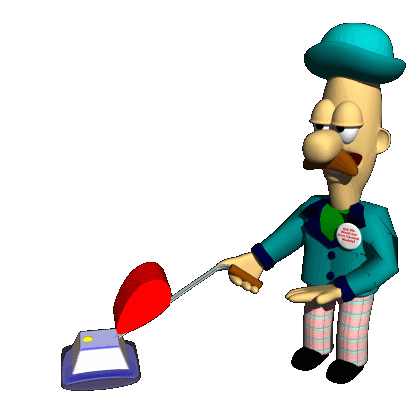Emergent Literacy Design
Make the Mess Vanish with Vacuum V
By: Christina Hogan

Rationale:
This lesson will aid children in identifying /v/, the phoneme represented by V. Students will learn to recognize /v/ in spoken words by learning a sound analogy (pushing a vacuum) and the letter symbol V, practice finding /v/ in words, and apply phoneme awareness with /v/ in phonetic cue reading by distinguishing rhyming words from beginning letters.
Materials:
Primary paper and pencil; memorable sound picture; poster with "Virginia visited Vicky and gave her violets and vegetables with vitamins."; drawing paper and crayons; Dr. Seuss's ABC (Random House, 1963); word cards with VET, COW, HAVE, VEST, and VASE; assessment worksheet identifying pictures with /v/ (see URL below).
Procedures:
1. Say: When the English language is used as a written language, it is like a top-secret code that must be cracked. The hardest part of cracking the code is learning what each letter stands for and the mouth moves that we make as we say words. Today, we are going to work on the mouth move /v/. The sound /v/ is spelled with the letter V. V looks like a pointy chip that fell on the floor. We need to use our vacuum V to clean the mess up.
2. Say: Let's pretend to vacuum up the mess, /v/, /v/, /v/, /v/. [Pretend to vacuum up the mess] Think about where your top teeth are. What do you notice? (Touch your bottom lip). When we say /v/, our top teeth touch our bottom lip, and our voice boxes are on. We know our voice boxes are on because we can reach up and feel our throat vibrate when we say /v/.
3. Say: Let me show you how to find /v/ in the word gave. I am going to stretch gave out in super slow motion, so that you can hear each letter in the word. Listen for my vacuum. Ggg-a-a-ve. Slower: Ggg-a-a-a-vvv-e. Ah-ha! I felt my top teeth touch my bottom lip, and I could feel that my voice box was on. Vacuum V is in gave.
4. Say: Let’s try a tongue tickler [on poster]. Virginia has a best friend named Vicky. Vicky couldn’t go to school one day because she wasn’t feeling well. Virginia missed her friend and felt sorry for her, so she decided to pay Vicky a visit. Here’s our tickler: "Virginia visited Vicky and gave her violets and vegetables with vitamins." Everybody say it three times together. Now, I want you to say it again, and this time, stretch the /v/ at the beginning of the words. "Vvvirginia vvvisited Vvvicky and gave her vvviolets and vvvegetables with vvvitamins." Let’s try it again, but this time I want you to break /v/ off of the beginning of the word: "/v/irginia /v/isited /v/icky and gave her /v/iolets and /v/egetables with /v/itamins."
5. [Have students take out their primary paper and a pencil]. Say: We use letter V to spell /v/. Capital V looks like a pointy chip that fell on the floor. Lowercase v looks like a smaller corner of a pointy chip. Let's write a lowercase letter v. Start right on the fence. Draw a straight line at a slant down to the sidewalk. Then, bounce right back up to the fence at a slant in the other direction. I want to see how everyone wrote their v. After I put a smile on it, I want you to make nine more just like it.
6. Call on students to answer and tell how they knew: Do you hear /v/ in vet or bat? have or beef? vest or sock? flap or vase? Say: Let's see if you can spot the mouth move /v/ in some words. Vacuum the mess if you hear /v/: Val, voted, to, view, very, large, vases, filled, with, vegetables.
7. Say: "Let's look at an alphabet book. Dr. Seuss tells us about a girl who does not play the violin well.” Read page 50, drawing out /v/. Ask the children if they can think of other words with /v/. Ask them to make up a silly creature name like Vapper-veffer-vog, or Vever-vacker-von. Then have each student write their silly name with invented spelling and draw a picture of their silly creature. Display their work.
8. Show VET and model how to decide if it is vet or pet: The V tells me to vacuum the mess, /v/, so this word is vvv-et, vet. You try some: COW: vow or cow? HAVE: has or have? VEST: vest or nest? VASE: base or vase?
9. For assessment, distribute the worksheet. Students draw a line from the van to pictures that begin with the sound /v/. Call students up individually to read the phonetic cue words from step #8.
References:
Anna Pugh, Clean Your House with V.
https://akp0034.wixsite.com/ela19/emergent-literacy
Katherine Mask, Victoria Vacuums Vehicles.
https://ktmack895.wixsite.com/reading/emergent-literacy
Assessment worksheet: https://www.kidzone.ws/kindergarten/v-begins1.htm